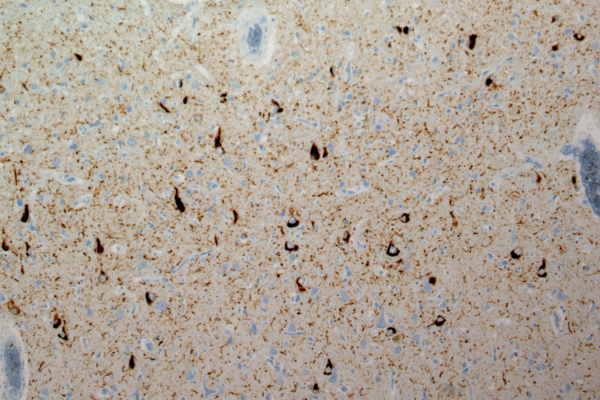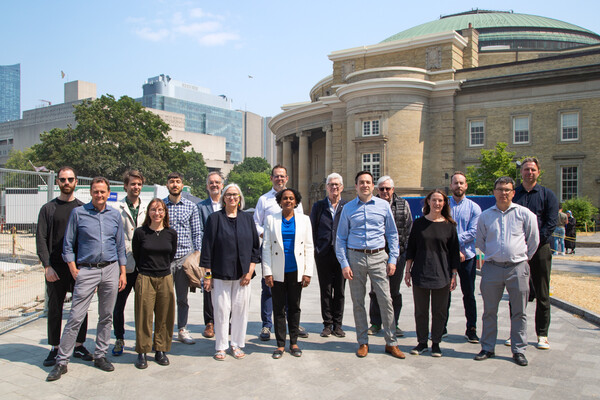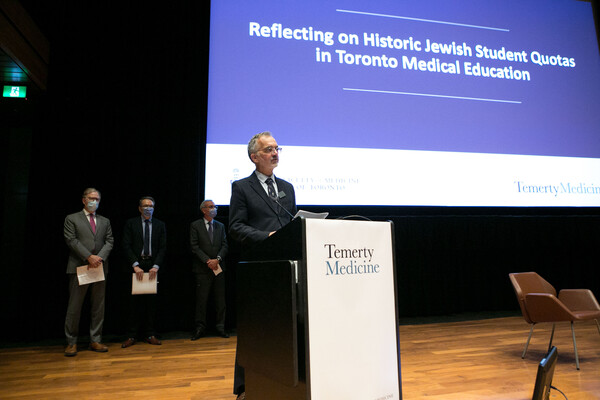Main Second Level Navigation
Breadcrumbs
- Home
- News & Events
- Recent News
- Temerty Medicine's Michael Pollanen Returns to Neurodegeneration Research
Temerty Medicine's Michael Pollanen Returns to Neurodegeneration Research

Michael Pollanen has joined the University of Toronto’s Tanz Centre for Research in Neurodegenerative Diseases as a scientist, 26 years after he completed his PhD in the centre.
Pollanen is a professor of laboratory medicine and pathobiology in the Temerty Faculty of Medicine at U of T, and Ontario’s Chief Forensic Pathologist. He joined the Tanz Centre late last year in part to pursue research on the tau protein, which is common in Alzheimer's disease but also in nodding syndrome — as he and a colleague discovered in rural Uganda in 2017.
Pollanen recently spoke about that surprising finding, his interest in neurodegenerative diseases, and why the Tanz Centre is an ideal place to pursue studies of the brain.
Much of your career to date has been in forensic pathology. What is the purpose of this field, and what research have you done in this area?
I describe forensic pathology as uncovering truths about why people died. A basic tool of forensic pathology is the autopsy or the postmortem examination — it's one of the mechanisms to find the truth behind how people have died, which may be due to reasons beyond the obvious cause of death. They may have died because of oppressive governments or diseases that emerge in a post-conflict environment, for example. As forensic pathologists, we conduct the autopsy from the perspective of the humanitarian application of science and medicine.
My research in this area has focused on understanding the deaths of vulnerable people, such as those affected by violence, war and environmental diseases. These populations include people in custody and victims of torture in politically unstable circumstances, where there has been internal armed conflict or crimes against humanity. Forensic pathology seems far away from neurodegenerative disease research, but there is a connection in this work that made the Tanz Centre an ideal home to continue my research.

What is that research connection?
Since some of the most vulnerable populations globally are in Africa, I gravitated to projects there. In 2017, I attended a conference in South Africa where I met a Ugandan pathologist, Dr. Sylvester Onzivua. He told me about an outbreak of a strange, unexplained and fatal brain disease affecting refugees in the war-torn northern part of Uganda. The disease was nodding syndrome.
Sylvester asked me, ‘What are you going to do about this?’ I thought we should work together to find the answers, so we started a multiyear research program on nodding syndrome, and I am continuing that work as a member of the Tanz Centre.
What is the link between this research and neurodegenerative diseases?
When Sylvester and I examined the brains of people who have died of nodding syndrome, we discovered a surprising finding: the brains contained abnormally folded tau proteins like those found in Alzheimer’s disease and chronic traumatic encephalopathy.
My early research in neurodegenerative diseases as one of the first graduate students in the Tanz Centre helped us make this discovery, but it was just a coincidence this problem had presented itself to me. We believe nodding syndrome and neurodegenerative diseases may have a common cellular and molecular basis; our mission now is to unravel that potential connection.
Tau misfolding in nodding syndrome is probably caused by an environmental factor acting on a vulnerable population, in rural Uganda. Because nodding syndrome has a limited occurrence in time and location, we believe we stand a reasonable chance of discovering what caused the tau misfolding in nodding syndrome. This could help figure out if a similar mechanism is occurring in other diseases.
I’ve been collaborating with two Tanz Centre scientists for a few years now, Janice Robertson and Gabor Kovacs, to help solve this riddle.

Why is research into nodding syndrome important to you?
I am deeply committed to this research for many reasons. First and most importantly, I have seen firsthand the devastating effects of this disease in Africa. There is an urgent humanitarian need to find answers for the affected communities, which are among the most vulnerable populations in Africa. The human cost of this disease is considerable — young women and girls with the disease are often sexually victimized, for example.
Second, we could make fundamental contributions in scientific understanding because this disease develops from misfolded tau, which is also present in Alzheimer’s disease and other neurodegenerative disorders.
Third, because I work with vulnerable populations, it’s important to me that my work overlaps with the goals of equity, diversity and inclusion by providing opportunities for research collaborations and capacity development among graduate students studying a problem in the Global South. Many students I have worked with have come from these affected communities, which is appropriate and important. Research needs to do more than contribute to scientific knowledge — it should have a larger relevance to the communities impacted by the issues under study.
How will your affiliation with the Tanz Centre help your research?
It's probably the single best institute in the world for me to do my work. It's truly an amazing place: the researchers are world-class investigators, there has been a huge strategic plan funded by philanthropy that benefits the mission of the centre, and the equipment and facilities are outstanding. The Tanz Centre has a long and illustrious history of making significant contributions, and I’m very excited to be here.
News


